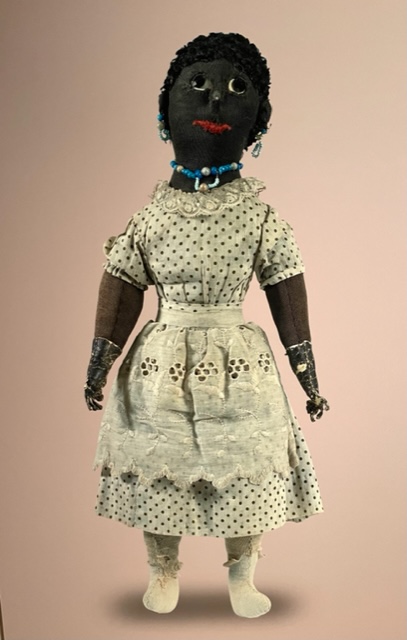
Photographs and text by Peggy Taylor
“If they had been given paint brushes they could have become painters; if they had been given clay, they could have become sculptors; if they had been taught to read and write, they could have become writers. They were given cast-off sewing basket scraps and with those they expressed their immense creativity.”
That is how Dominique Jean-Louis, co-curator of the New-York Historical Society’s fascinating Black Dolls exhibit describes the unsung, enslaved Black women whose dolls are on display from February 25 through June 5, 2022.
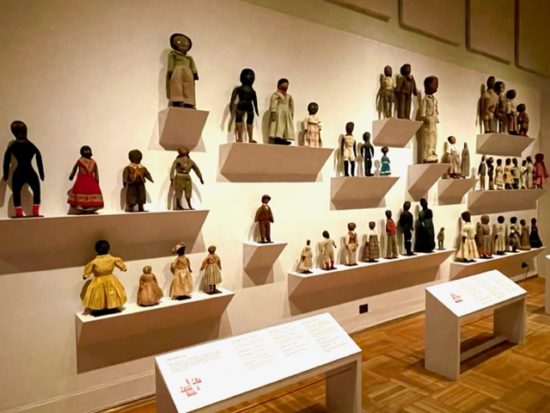
The exhibit showcases 110 handmade dolls from the private collection of Deborah Neff. There are Black dolls by the enslaved, Black dolls by runaways, Black dolls by Black men, Black dolls by white abolitionists, Black dolls by white manufacturers, Black dolls by Black manufacturers, Black dolls conjoined at the waist with white dolls, Black dolls owned by white children, Black dolls owned by Black children, Black dolls designed to foster self-esteem, and finally Black dolls created by the mother of our former First Lady, Chirlane McCray. Add to this dolls by novices and dolls by expert doll makers, and you end up with a rich and wide-ranging display.
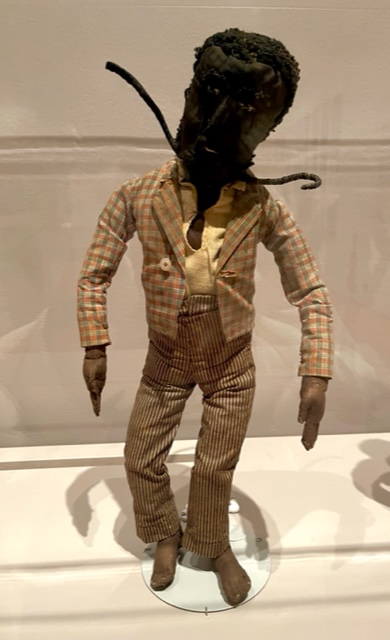
The exhibition follow the dolls’ evolution throughout different periods of American History—slavery, Reconstruction, Jim Crow, the Civil Rights era and finally the 1990s. And throughout it all we admire the ingenuity that went into their creations as the women used scraps of cloth, ribbon and lace, or old socks, stuffed with wool, cotton, or sawdust, to express themselves and the world around them.
But the exhibit doesn’t end with the dolls. The Museum supplements the Neff Collection with period photographs, textiles, books, games, sewing tools, and furnishings, which offer vital historical context and increase the number of objects displayed to 200.
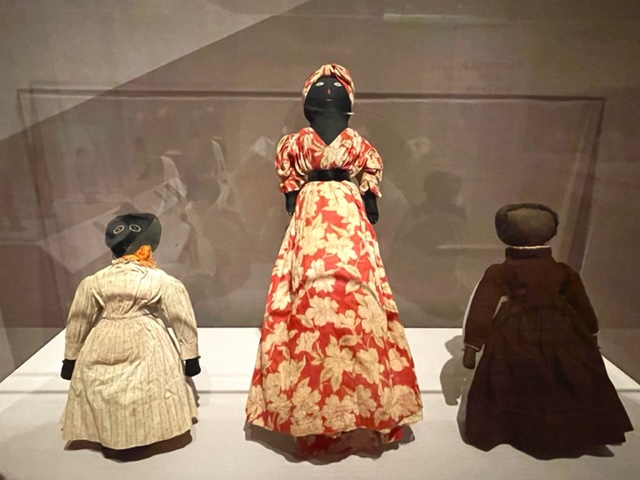
From a different collection, there are three dolls made by Harriet Jacobs, a runaway who made the dolls between 1850-1860 for the white children of the Willis family of New York, where she worked after her escape. In her autobiography published in 1861, she recounts her desperate flight from slavery and her years spent in hiding in the garret of her aunt’s house where she used sewing to relieve her loneliness and fear. A copy of Jacobs’ “Incidents in the Life of a Slave Girl” is on view.
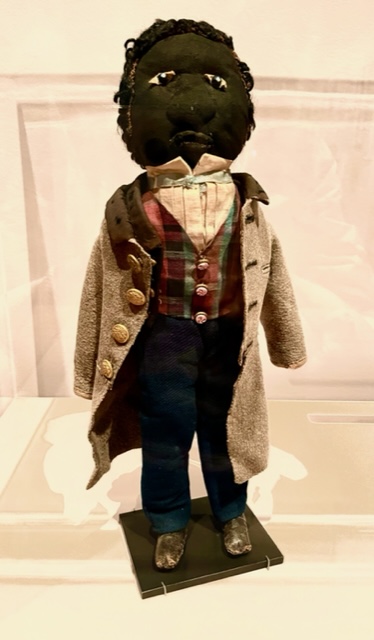
Three dolls by the white abolitionist, Cynthia Walker Hill, stand out as they depict Black men, including Frederick Douglass, and were sold to help support the abolitionists’ cause. Their motto: “May the points of our needles prick the slaveholder’s conscience.”
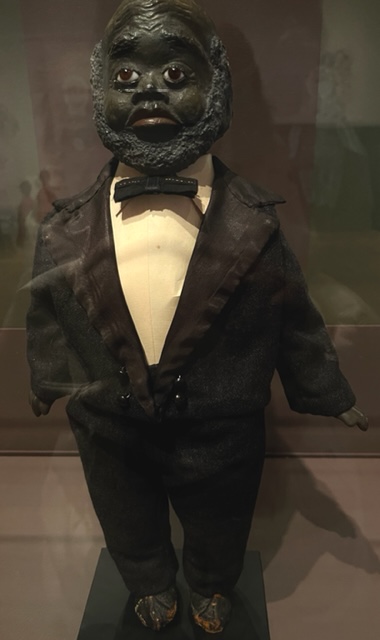
Three dolls from the 1930s were made by Leo Moss, a Black handyman in Macon, Georgia, who repurposed commercial white dolls by remodeling their hair, features, and facial expressions and tinting their skin with boot dye until they resembled himself, family members, or neighbors.
Dolls which at first glance might seem to be stereotypes turn out to counter caricature when one considers the skill in design, the needlework and the craftsmanship lavished on their outfits. The dolls are wide-ranging, depicting boys and girls and men and women. As Neff was once quoted as saying: “You can think of their diversity, their plurality, as itself a powerful response to a stereotype.”
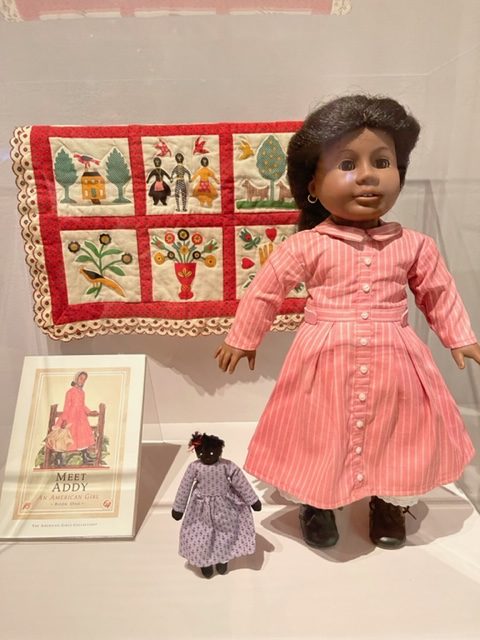
Also on view is Addy Walker, the first Black character created by American Girl and which it added to its collection in 1993 to educate children about American slavery and emancipation. Addy’s braided hair and West African cowrie shell necklace reflect Black culture, the cowrie shell having belonged to her African-born great-great-great grandmother. Addy is accompanied by her own cloth doll, Ida Bean, and a quilt modeled after an 1854 family album quilt by Black quilter Sarah Ann Wilson.
The exhibition ends with a slideshow featuring contemporary doll collectors, including artist Betye Saar, as Black doll collectors continue to forge communities, both in person and online, to celebrate their shared interest.
Black Dolls is curated by Margi Hofer, vice president and museum director, and Dominique Jean-Louis, associate curator.










I came to this country from Europe in 1940. I was 8 and I had never seen a Black person. I thought that the different shades of brown skin were beautiful. I asked for a brown skinned baby doll, but my parents couldn’t find one. I’m happy to say that they are now available.
The exhibit had photos next to Leo Moss’s dolls of cat-scans and x-rays of the dolls. These revealed the layers of fabric he used to change the size and shape of the white dolls he came upon, and one cat-scan even revealed a long-defunct music box inside one of the dolls!
You are fantastic Peggy. U r Soo talented. God bless u.
Thank you, Stacey!